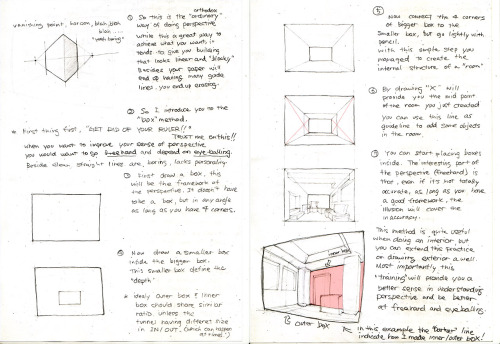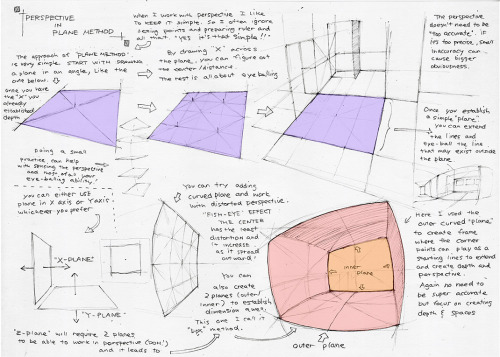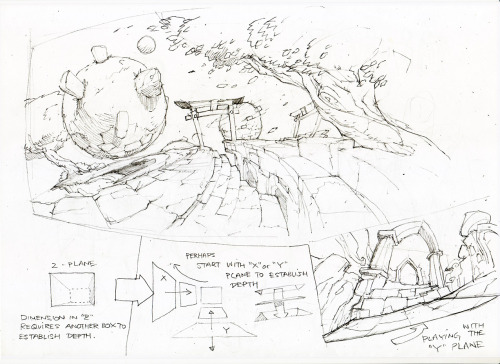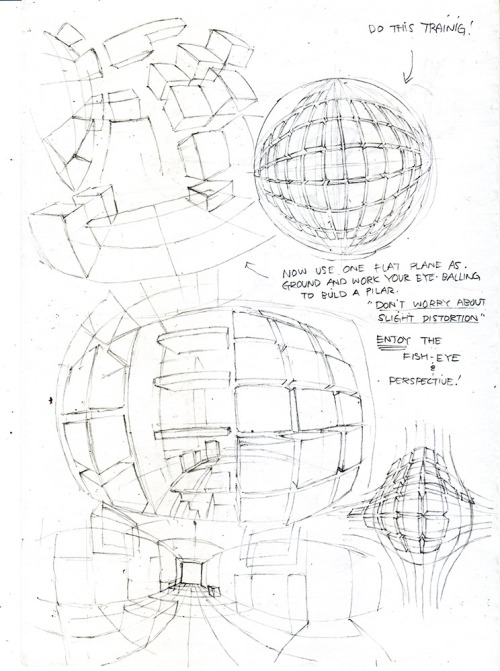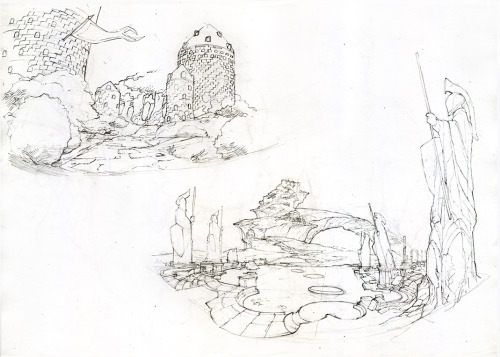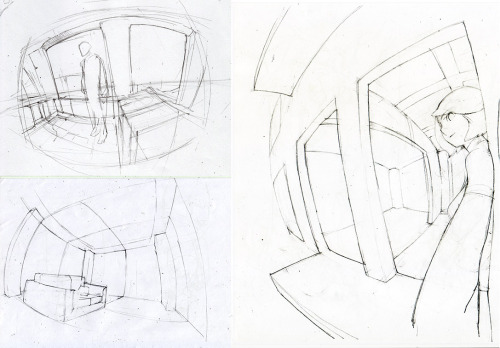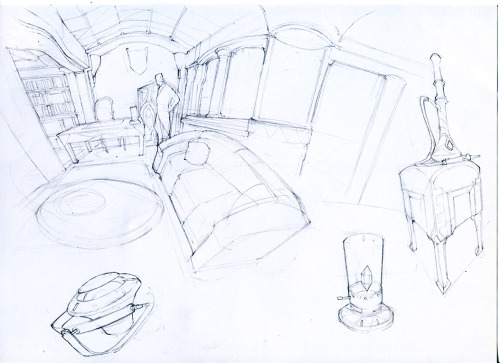toshinho: PERSPECTIVE & WARPED PERSPECTIVE TUTORIALS with SamplesPlease consider REBLOG and no
toshinho: PERSPECTIVE & WARPED PERSPECTIVE TUTORIALS with Samples Please consider REBLOG and not just like, cause you’re not only supporting me but help others with getting use to perspective drawing! I’ve archived series of perspective & warped perspective tutorials that I made in the past with minor revisions and added samples. I believe some people have struggle with perspective probably because of the impression of complexity and the fancy terms that comes with it. I’ve met many artists that just didn’t want to deal with the all fancy terms like “3 point/4 point” perspective and walked away from it and I understand that feeling. Personally these terms are quite useless and that the important part of perspective drawing is really just capturing the dimension and getting use to it. (When I do perspective drawing I put very little consciousness in points & lines but towards how my brain is seeing the depth and dimension.) When I first learned perspective drawing in elementary school art class, my teacher taught me the conventional method with ruler, lines and dots. While it provide accuracy, it tends to require alot of lines and wide space where your starting points existing way off the page and perhaps this might be the reason why some people find it tedious and hard to deal with. So I’m going to ditch using ruler and the fancy term and demonstrate them in much simpler approach. I purposely build these tutorials in raw pencil rather than the nice looking digital tutorials because I want to show you that it’s not about the precision and accuracy that makes convincing perspective but a daily scribble and eye-balling. Treat them like any other drawing practice, doing tons of freehand and eye-balling to grasp the dimension in your head. I wont stop you from making a use of a ruler, however perspective drawing is a vital practice to improve your line work as well. (Personally when I use a ruler, my perspective looses the sense of dynamics and objects would look too uniform. Besides clean straight lines has no personality and can look dull at times.) 1 BOX - Method The idea is that when drawing 2 squares with different size (having same or similar ratio) you have already managed to create an illusion of dimension. By connecting each corners with four lines you are dealing with perspective. The key to this practice is that you’re trying to place your consciousness on dimension and not towards drawing a nice looking box. Train your eye-balling by making use of the four extending lines from each corners to get the perspective line without the need of referencing the focal (center) point.2 & 3 PLANE - Method (The lower portion of third image) Basically it’s the reverse of conventional point based perspective. You’re not drawing from the point but towards the imaginary point. When you draw a square shape in an angle, you manage to create first step of illusion that suggest dimension, so this tutorial is trying to take advantage of that situation. (Tho it’s heavily dependent towards your EYE-BALLING SKILLS!)4 FISH - EYE TUTORIAL This is pseudo “Fish-Eye” tutorial that is trying to simulate fish-eye lens on a camera. The idea is that the object close to the center has fewer distortion and will cause more distortion as it gets further towards the edge of the lens (sphere). I believe that warped perspective requires a bit of confidence in handling normal perspective drawing. More so the sense in eye balling is needed, so get use the normal perspective drawing first and then start mixing warped perspective into your practice.My 2 cent is that rather than using a big space on an empty page/canvas, draw a frame and then start drawing. (You can see me do that on few of my samples.) This tip apply to general drawing as well since “big empty canvas” can be a bit intimidating. By setting a frame or a border, it’s actually you’re first attempt on creating an illusion in a 2D space. My final note is that even though you’re doing a freehand, a sloppy lines will break the illusion, so pay attention to where the line starts, how it flow and where it ends. Support me on Patreon so I can create more artworks and tutorials!MY PATREON PAGE –> www.patreon.com/toshinho -- source link
